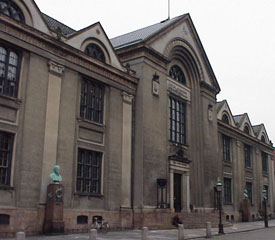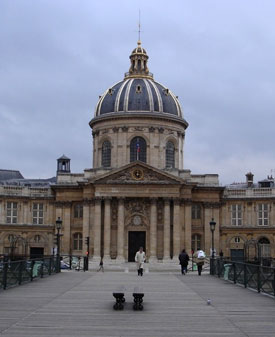Electromagnetism - The unique discovery
At the start of the 19th century electricity was a mysterious force which could produce sparks and small shocks and cause a wire to glow. But the physicists had great difficulty finding out what this electric force actually was and how it was regulated.

As a physicist Ørsted was intrigued by both electricity and magnetism. In the spring of 1820 he was appointed professor at the University of Copenhagen and held weekly lectures on physics and chemistry. Some of his most popular lectures focused on the latest knowledge about electricity and magnetism.
The relationship between electric and magnetic forces
Ørsted was sure that there was a connection between electric and magnetic forces. Before one of his lectures he decided that he would try to demonstrate this. He would try to get a strong electrical force to affect a magnet.
Inside the lecture hall a test setup was prepared - it consisted of zinc plates, placed in a copper basin with acid and connected by a metal wire. This setup formed a large battery. This was the most effective way to generate electricity at that time.

Copenhaven University
In front of the audience Ørsted held a compass right next to the battery's metal wire. Then he turned on the current. When he moved the compass around a little bit, the magnetic needle fluctuated suddenly. This did not happen when it pointed in towards the metal wire, which Ørsted had anticipated, but when the needle and the wire were parallel.
After Ørsted had repeated the experiment in many different ways and was absolutely sure of his case, he reported his discovery abroad. The strange electric force could really cause a magnetic needle to move!
Reception in Paris
Paris was the scientific centre at that time. Ørsted's report was brought to the Académie des Sciences as an express letter and read aloud in front of the assembly.
The French physicists knew that if what Ørsted wrote was true it would change their entire understanding of what electricity was. But there were many who were sceptical. The highly respected French physicist Coulomb had actually said that magnetic and electric forces could not affect each other.

Académie des Sciences in Paris.
But on September 11th, 1820 a demonstration of the experiment was arranged and then a wild pandemonium broke out. The French physicist Ampère, for example, rushed home from the meeting and worked non-stop the through the next week experimenting. Shortly after this he discovered that electrical coils can turn an ordinary iron bar into a magnet. Altogether the new discovery was the start of researchers from all across Europe throwing themselves into electromagnetism, as Ørsted himself had named the effect.
In 1831 Michael Faraday discovered, that just as electricity can affect magnets, magnetism can also produce electricity. It is the effect which we call induction. After the discovery of induction the world had an effective method of producing electricity in large quantities.
When Ørsted devised his experiments with the electric and magnetic forces he was looking for an explanation of what electricity really was and how the different forces of nature are related to each other. But his discovery set in motion a development which made it possible to build machines that are powered by electricity. The fluctuations of the little magnetic needle were the beginning of our electric society.
|



